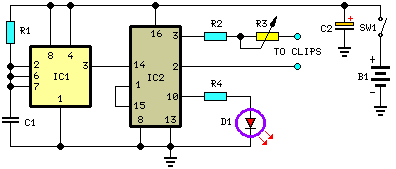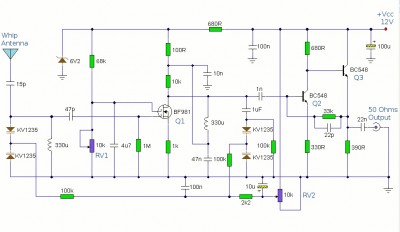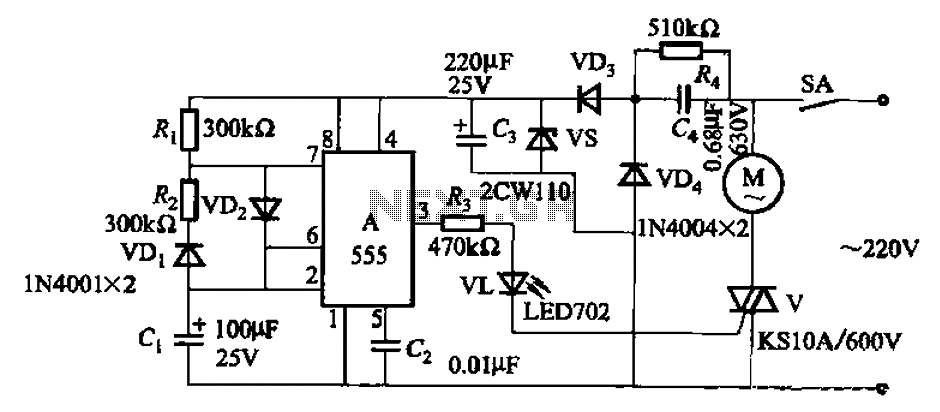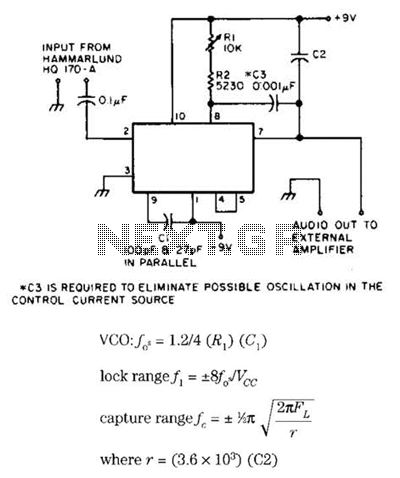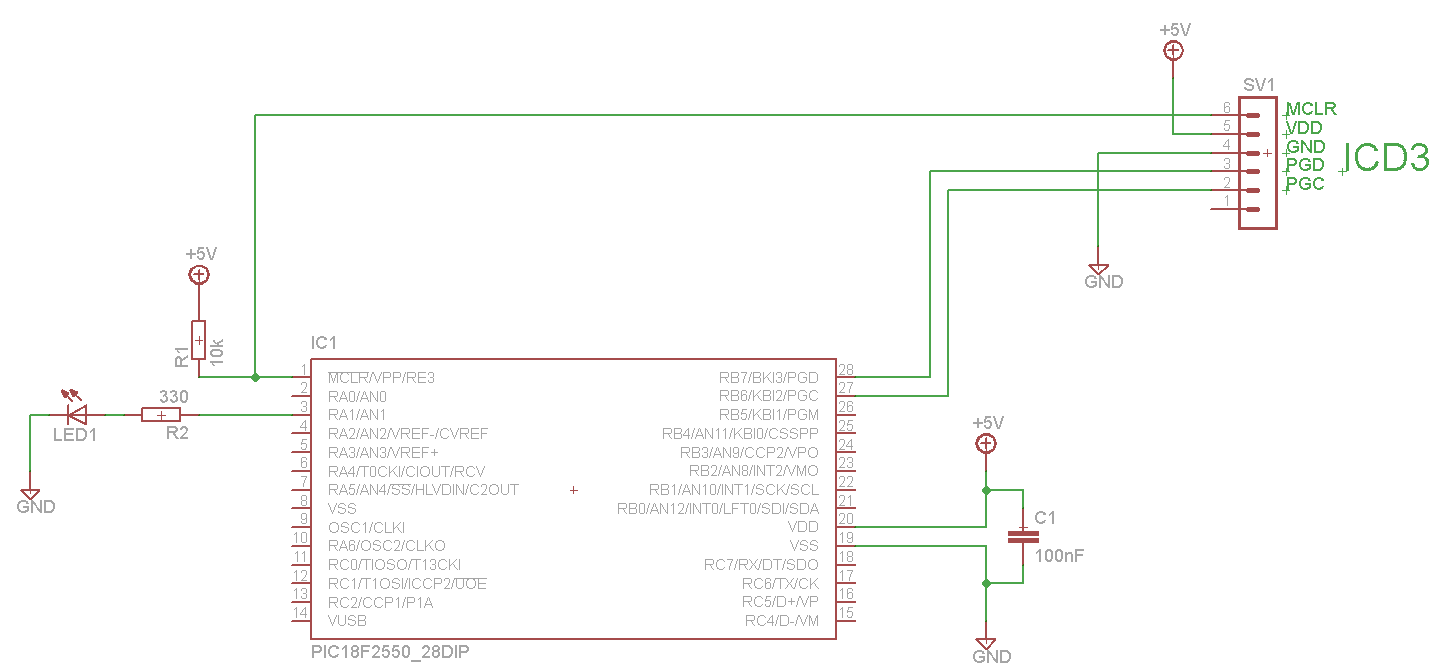
pierce xtal oscillator circuit
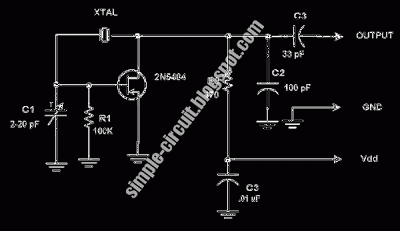
This circuit is a conventional Pierce-type oscillator that utilizes a JFET. It operates with fundamental mode crystals, offering decent performance and reliability when a low noise JFET is employed. The feedback is regulated by the capacitance of C1 from the drain to ground. Frequency adjustment can be achieved by modifying the shunt capacitance C2 across the crystal. The crystal operates in parallel mode. This circuit is ideal for applications where multiple crystals can be switched in and out to select the frequency, as no tuning is necessary.
The Pierce oscillator is a well-established circuit configuration commonly used for generating high-frequency signals. It typically consists of a JFET, a crystal, and two capacitors (C1 and C2). The JFET serves as an active device that provides the necessary gain and feedback to sustain oscillations. The fundamental mode crystal is a critical component that determines the oscillator's frequency stability and accuracy.
In this configuration, the crystal is connected in parallel with the shunt capacitor C2, which allows for fine-tuning of the oscillation frequency. The value of C2 can be adjusted to shift the frequency slightly, accommodating variations in crystal characteristics or application requirements. The capacitor C1 plays a significant role in controlling the feedback path from the drain of the JFET to ground, ensuring that the oscillator operates effectively within its desired frequency range.
One of the key advantages of this oscillator design is its ability to switch between different crystals without the need for manual tuning. This feature is particularly beneficial in applications that require multiple frequency outputs, as it simplifies the circuit design and enhances operational flexibility. The use of a low noise JFET further improves the performance and reliability of the oscillator, making it suitable for high-precision applications.
Overall, the Pierce oscillator is a versatile and efficient circuit for generating stable oscillations, particularly in environments where frequency switching is necessary. Its straightforward design and minimal tuning requirements make it a preferred choice among engineers in various electronic applications.This circuit is conventional Pierce type oscillator that uses a JFET. The circuit uses fundamental mode crystals. It has decent performance and reliability if we use a low noise JFET. This is the figure of the circuit. The feedback is controlled by the C1 Capacitance from drain to ground. Adjusting the frequency can be done by adjusting a shunt capacitance C2 across the crystal. The crystal works in parallel mode. This circuit is suitable where some crystals should be switched in and out to select the frequency, as there`s no tuning required. 🔗 External reference
The Pierce oscillator is a well-established circuit configuration commonly used for generating high-frequency signals. It typically consists of a JFET, a crystal, and two capacitors (C1 and C2). The JFET serves as an active device that provides the necessary gain and feedback to sustain oscillations. The fundamental mode crystal is a critical component that determines the oscillator's frequency stability and accuracy.
In this configuration, the crystal is connected in parallel with the shunt capacitor C2, which allows for fine-tuning of the oscillation frequency. The value of C2 can be adjusted to shift the frequency slightly, accommodating variations in crystal characteristics or application requirements. The capacitor C1 plays a significant role in controlling the feedback path from the drain of the JFET to ground, ensuring that the oscillator operates effectively within its desired frequency range.
One of the key advantages of this oscillator design is its ability to switch between different crystals without the need for manual tuning. This feature is particularly beneficial in applications that require multiple frequency outputs, as it simplifies the circuit design and enhances operational flexibility. The use of a low noise JFET further improves the performance and reliability of the oscillator, making it suitable for high-precision applications.
Overall, the Pierce oscillator is a versatile and efficient circuit for generating stable oscillations, particularly in environments where frequency switching is necessary. Its straightforward design and minimal tuning requirements make it a preferred choice among engineers in various electronic applications.This circuit is conventional Pierce type oscillator that uses a JFET. The circuit uses fundamental mode crystals. It has decent performance and reliability if we use a low noise JFET. This is the figure of the circuit. The feedback is controlled by the C1 Capacitance from drain to ground. Adjusting the frequency can be done by adjusting a shunt capacitance C2 across the crystal. The crystal works in parallel mode. This circuit is suitable where some crystals should be switched in and out to select the frequency, as there`s no tuning required. 🔗 External reference
